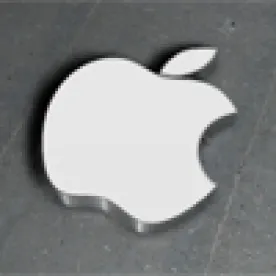In three parallel decisions, the Patent Trial and Appeal Board (PTAB or Board) determined that patents directed to validating payment and then granting access to data were eligible for covered business method (CBM) review and were more likely than not directed to patent-ineligible subject matter. Apple Inc. v. Smartflash LLC, CBM2015-00028 (PTAB May 28, 2015) (Elluru, APJ), CBM2015-00029 (PTAB May 28, 2015) (Elluru, APJ), CBM2015-00031 (PTAB May 28, 2015) (Anderson, APJ).
The challenged patents are directed to data piracy, prevention, i.e., to the prevention of internet users making proprietary data—such as music—available over the internet without authorization. The patents address this problem using portable storage for storing the proprietary data and restricting access to the data until a computer can validate payment. The portable data-storage device receives payment information from the internet, verifies that information, downloads the proprietary data into the data-storage device and then allows the user to access to the data from a mobile device. The patents explain that the physical implementation of the invention is not important. Instead, the specification explaining that the heart of the invention is restricting access to data based on validation of payment.
The Board first determined that the patents were eligible for CBM review. To be eligible for CBM review, the patent must be used in the operation of a “financial product or service” and not qualify for the “technological invention” exception. (See IP Update, Vol. 18, No. 6.) The Board determined that the patents satisfied the “financial product or service” requirement because the patents performed the financial service of restricting access to content based on payment data, an activity that is financial in nature. The Board reasoned that the “financial product or service” requirement was not so narrow as to require that the patents relate to technology used in the financial or banking industry. The “financial product or service” requirement merely requires that the patented activity be “financial in nature.”
The Board also determined that the asserted patents were not directed to “technological inventions.” The patents merely recited non-novel and obvious technological features, such as “nonvolatile data memory” and “standard smart cards.” The patents also admitted that their novelty related to controlling access to data, not any specific improvement of software or hardware. The Board reasoned that the patents addressed not a technological problem but a business problem, data privacy. The patents were therefore eligible for CBM review.
Turning to subject-matter eligibility, the Board determined that the patents were more likely than not directed to patent-ineligible subject matter. Under the Supreme Court decision in Alice (IP Update, Vol. 17, No. 7) in order to determine whether a patent is directed to patent-eligible subject matter requires a two-step inquiry: whether the patent is drawn to a patent-ineligible concept, such as an abstract idea; and whether the claims recite an “inventive concept” that ensures that the patent amounts to significantly more than a patent pre-empting the abstract idea itself. Looking at the first step, the Board determined that the patents were directed to the abstract idea of restricting access to data based on validation of payment. Next, the Board determined that the patents likely did not contain an inventive concept. The recited computer functions— “receiving,” “reading” and “displaying”—were all purely conventional functions performable on a generic computer. The Board therefore preliminary concluded that the patent claims were more likely than not unpatentable under § 101 and instituted CBM review.




 />i
/>i

